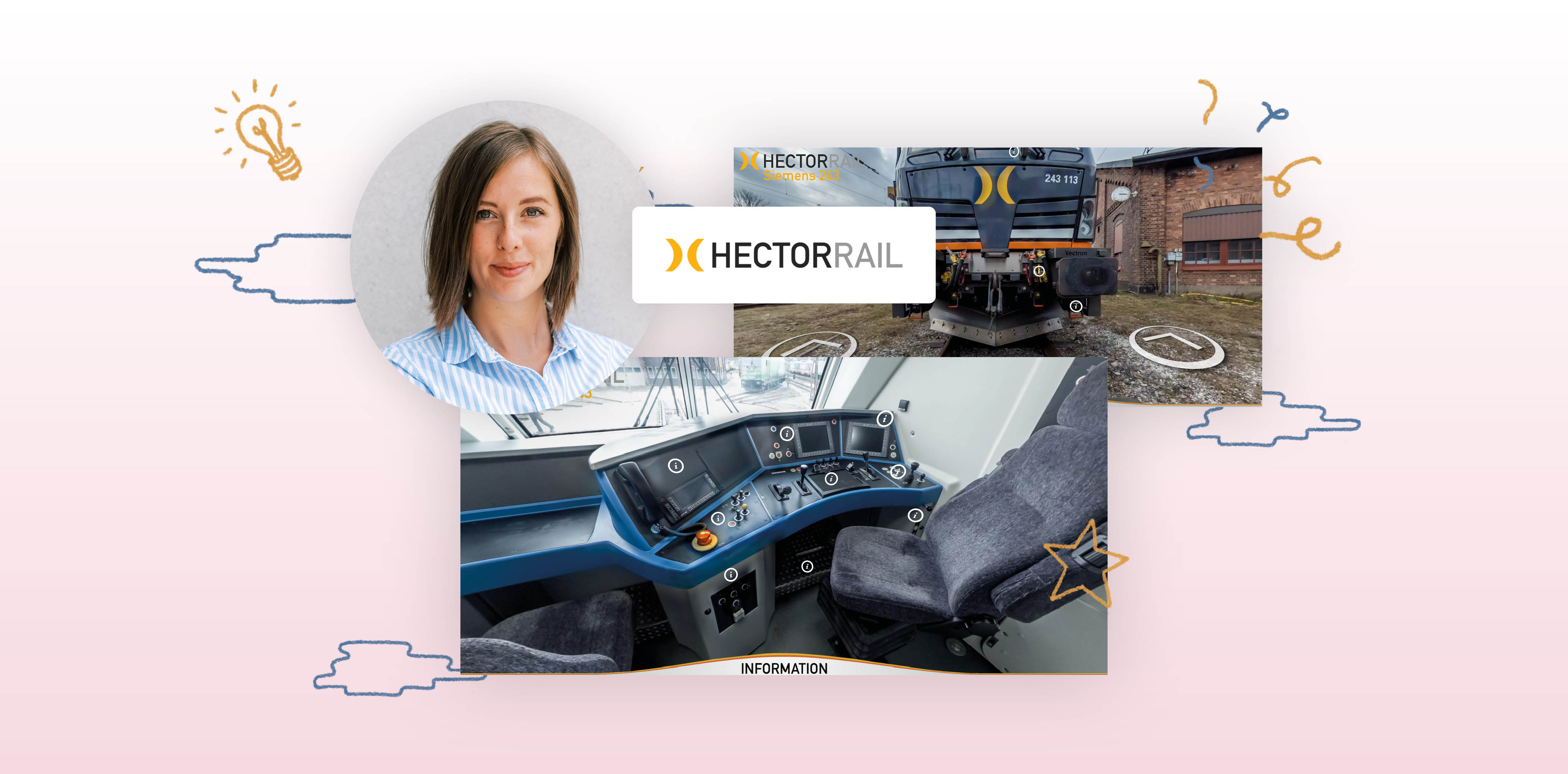Hector Rail is Scandinavia's largest privatized railway company. They offer environmentally friendly transport services of heavy industrial products, raw materials and intermodal shipping as well as transport of passengers in Scandinavia and Europe. In order to guarantee high safety in driving locomotives, wagons and goods in the various infrastructure systems, it is extremely important to have a well-functioning training organization. With a workforce that includes Train Drivers, Shunters, and Train Hosts, the company recognizes that e-learning does not suit every individual. Therefore, it has become essential to employ a variety of visual learning methods to maintain participants’ interest and ensure effective knowledge transfer.

A critical aspect of Hector Rail's training program is the ability to measure its effectiveness using various Key Performance Indicators (KPIs). Assessing the success of training initiatives and ensuring that employees have thoroughly grasped the necessary knowledge is a complex task. Given the diversity of courses and individual learning paths within the railway industry, this evaluation process can be challenging. However, Hector Rail remains committed to refining their training methods and continuously improving the quality of their educational offerings.
Furthermore, operating across multiple countries—Sweden, Denmark, Norway, and Germany—requires the company to adapt its training materials to different languages and cultural contexts. This necessitates frequent updates and the creation of multiple versions of each course to ensure that all employees, regardless of location, receive the same high-quality education.
Hector Rail has recognized the importance of effectively conveying knowledge across its organization, particularly to its primary workforce of train drivers, shunters, and train hosts. In recent years, they have expanded their training efforts to include office-based staff, ensuring that everyone in the company benefits from comprehensive learning opportunities. The introduction of Learnifier has played a pivotal role in making this possible, allowing Hector Rail to distribute knowledge and information more efficiently across the entire organization.
 |
"It has been so good to have a tool that everyone has been able to use. Easy to work with and fun! I usually warn those who create courses that time flies" |  |

Before making a significant investment in e-learning, most of Hector Rail’s training was conducted in traditional classroom settings, supplemented by some e-learning on a different platform. This approach was often cumbersome and inefficient, involving piles of manual tests and evaluations that were easily overlooked. The shift to a more integrated e-learning system has allowed the company to streamline training efforts, improving collaboration and tracking through more effective use of statistics on test results and evaluations.
 |
"For those of us who create training that is mandatory and where employees must be certified, it is very important to be able to ensure that the employees have assimilated the knowledge." |  |

Today, Hector Rail offers over 70 different courses through their learning portal, covering everything from basic to advanced training for their 15 types of locomotives. This includes not only compliance trainings to ensure compliance with both internal regulations and EU directives, but also refreshers and supplementary training for specific locomotive functions, such as radio systems. A key innovation has been the integration of Virtual Reality (VR) elements into their training programs, allowing employees to virtually explore locomotives and track environments. This has reduced the need to take expensive locomotives out of service for training purposes, as digital copies can now be used instead.


Hector Rail has developed a highly structured approach to e-learning, utilizing the Learnifier platform to create, test, evaluate, edit, and launch courses. Every employee at the company begins their journey with a standardized onboarding process, followed by a customized course package that aligns with their specific role. This onboarding includes essential information-based courses on topics such as ISO certification, the company’s code of conduct, and sustainability practices. The company’s training team embraces a “learning by doing” philosophy, fostering experimentation, collaboration, and continuous evaluation across all levels of the organization. While this approach initially led to the development of several experimental courses, it has ultimately enabled Hector Rail to refine its processes and enhance the quality of its e-learning offerings over time.
The challenge of designing effective learning journeys that cater to the diverse needs of different employee groups is particularly evident in mandatory training programs where certification is crucial. To address this, Hector Rail includes quizzes at the end of each course, with a required passing score of 75%, ensuring that employees engage thoroughly with the material. This approach not only enhances the seriousness with which employees approach their learning but also helps the company maintain high standards of knowledge and competence across its workforce. By continuously refining its e-learning processes and tailoring training to individual roles, Hector Rail has been able to meet the varied and complex needs of its employees, ensuring they are well-prepared for their roles within the company.
The success of Hector Rail’s e-learning initiatives is measured through various methods, including satisfaction indices, test results, and the number of employees trained per month, with courses being revisited and improved as needed if they do not meet their goals. One of the most significant outcomes of this investment has been substantial time and cost savings, with approximately SEK 1.2 million saved from just two courses/projects. With 70 active courses now available, Hector Rail continues to see significant benefits from their e-learning platform, reinforcing the value of their approach to internal course development and employee training.
 |
"Just by doing two courses / projects with e-learning, we have saved SEK 1.2 million the first year. We currently have about 70 active courses." |  |
Looking ahead, Hector Rail aims to establish a strong structure and processes to ensure that no employee falls through the cracks—whether that means missing certifications, deadlines, or training opportunities. The goal is to maintain updated courses of the highest quality and to equip employees with the skills they need to excel.
.png?width=153&height=58&name=Learnifier%20TextLogo%20NearBlack%20-%20PNG%20MEDIUM%20-%20800px%20(2).png)






